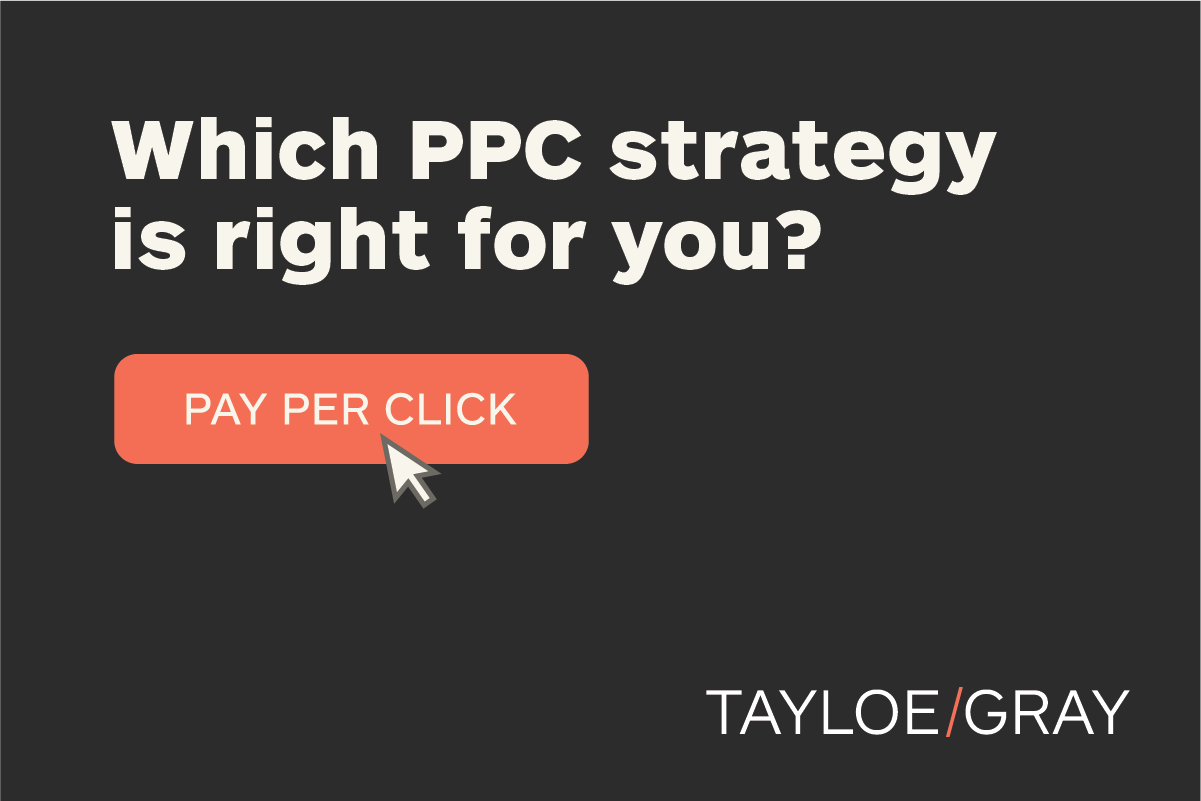
Deciding which Pay-Per-Click or PPC bidding strategy is right for you can seem like quite a daunting task. There are seemingly endless options and without the right guidance you could end up exhausting your digital marketing budget with very little to show for it.
Not to fear! That’s why the experts at Tayloe/Gray have put together a simple list of all the available PPC bidding strategies within Google Ads.
-
Target CPA
Target CPA or cost-per-acquisition bidding sets bids for you to get as many conversions or desired customer actions as possible. Keep in mind that your cost per conversion may fluctuate and you may pay more for one conversion than another, but altogether Google will keep your cost per conversion equal to your target CPA.
-
Target ROAS
Target ROAS or return-on-investment determines the value of a potential conversion every time a user searches for products or services you’re advertising. Then, Google will automatically adjust your bids for these searches to maximize your return on them.
-
Maximize clicks
With Maximize clicks your bids are set automatically to help get as many clicks as possible within your budget.
-
Maximize conversions
Maximize conversions by optimizing your bids to get the cheapest conversions available for your budget.
-
Maximize conversion value
Maximize conversion value bidding determines a bid for your ad to help get conversions that are the most valuable for your campaign while spending your budget. It’s important to note that the focus is on the quality of the conversion rather than the number of conversions.
-
Target impression share
Target impression share is an automated bidding strategy that sets bids with the goal of showing your ad on the absolute top of the page, on the top of the page, or anywhere on the page of Google search results.
-
Manual cost-per-click (CPC)
Manual cost per click allows you to set bids at either the ad group or keyword level. This strategy is useful for those who desire more granular control of their campaigns, as you can set individual bids at the keyword level or apply the same bid to all the keywords within an ad group.
-
Enhanced cost-per-click (ECPC)
Enhanced CPC (ECPC) is a setting you can apply to your manual CPC campaign that allows Google to increase or decrease your bids depending on the chance of a conversion. In other words, Google won’t exhaust your budget bidding on a click that you are not likely to win.
-
Viewable CPM (cost per 1,000 impressions)
With viewable CPM, you bid on 1,000 viewable impressions and you pay for impressions that are measured as viewable. Viewable CPM lets you bid on the actual value of your ad appearing in a viewable position on a given placement.
-
Maximum CPV (cost-per-view)
With CPV bidding, you’ll pay for video views or clicks on the video. A view is counted when someone watches 30 seconds of your video or interacts with the ad, whichever comes first.
-
Target CPM (cost per 1,000 impressions)
Target CPM allows you to pay the average bid you’re comfortable paying for every 1,000 times your ad is shown. Keep in mind that with this strategy, your cost is based on your ad is shown regardless of if viewers finish the ad or skip it.
Take Your PPC Campaigns to the Next Level
If you’re ready to take your PPC campaigns to the next level, our team of digital experts at T/G are here to help! Contact us today and let us set you up for PPC bidding success.
